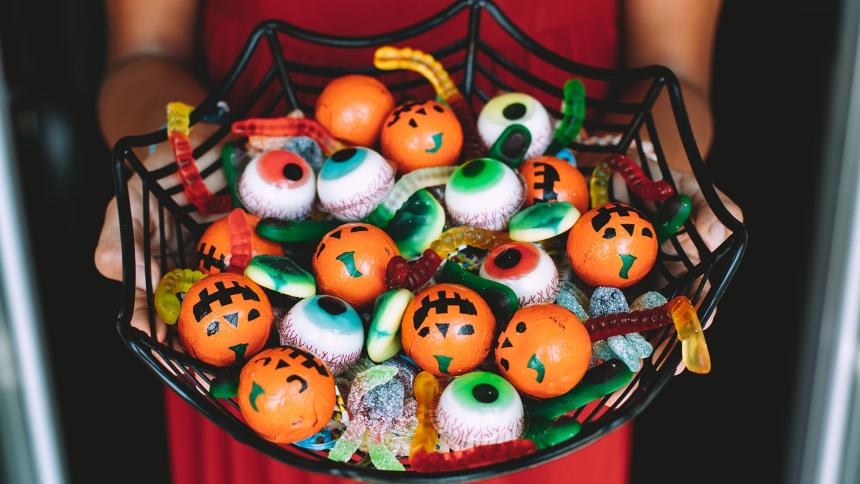
The truth about poisoned Halloween candy: Fact or fiction
It’s the classic urban myth. The Halloween horror story that trick-and-treat candy is poisoned. Tales of poisoned treats being given out to children have circulated around the holiday for decades.
In the past, parents even had their children’s sweets X-rayed to ensure they hadn’t been tampered with.
And it’s not just an American epidemic, either. In 2018, a mother of two in North Tyneside claimed her kids had been given a bag of ecstasy when trick-or-treating. In 2022, it was rainbow fentanyl that was allegedly being distributed by drug cartels who particularly wanted to target the young.
Fentanyl is a highly addictive opioid that comes in the form of pills and powders which can look like sweets. This isn’t some scaremongering being spread between parents or on social media, either. The Drug Enforcement Agency in America has been warning people that it’s the next step in the opioid crisis. Drug cartels are allegedly trying to maximise their profit by getting children addicted to drugs.
And yet, experts are assuring that kids are no more at risk from fentanyl than they have been from tampered-with treats any other Halloween.
So, what’s the truth?
In 1959, a dentist called William Shyne gave out laxatives to children in place of sweets. 30 children fell ill, although all recovered and Shyne was later arrested.
But in the years following his actions, media reports of Halloween poisoners and threats to children began to come out, with parents warned every year of the possible threat to children.
More damage seemed to have been done by an article from the New York Times published in 1970, which gave examples of all the ways children’s treats could be spiked.
Then, of course, there are legitimate news stories, which only fuel fears.
In 1964, Helen Pfeil was arrested for handing out things like buttons, dog biscuits, steel wool pads and pest killers to children, which she had wrapped in tin foil. Pfeil said she only gave these things to the children she thought were too old to be trick-or-treating. And crucially, no one died.
Then, in the 1980s, there were the Tylenol murders. In Chicago, seven people were killed after taking Tylenol which had been laced with cyanide. Further poisoned tablets were found in shops and pharmacies in the area, but luckily, no one had taken any of the pills. It was later confirmed the drugs had been tampered with after they left the factory, leading to a mass change in the way pharmaceuticals are sold, including with the packaging. The murders remain unsolved.
Copycat incidents occurred, although none were as deadly. But the fear the case had sparked bled into Halloween and trick-or-treating, contributing to the urban myth.
Then there was the case of Kevin Toston, a five-year-old who it was reported went into a coma and died after he ate sweets laced with heroin. The truth was this was actually a cover-up on behalf of his family, who were worried they may be accused of neglect after Kevin found his uncle’s heroin stash and swallowed a capsule.
One child has died in the past from eating poisoned Halloween sweets. In 1974, eight-year-old Timothy O’Bryan died after eating Pixie Stix that had been laced with cyanide that he had been given when trick-or-treating. However, it wasn’t a mysterious stranger that gave Timothy the sweets, but his own dad, Ronald O’Bryan. O’Bryan also attempted to give poisoned sweets to his daughter and three other children, but luckily, they didn’t eat them.
Because Timothy was murdered by his father, it doesn’t count as a trick-or-treat poisoning. But actual reports of children who have died from poisoned sweets handed out trick-or-treating? There aren’t any.
In other words, rest assured this is just a Halloween myth. And yet, the rumours persist. Here are six of the classic tricked treats that have worried parents.
1. Razor blades in apples
A classic Halloween myth is the apples (toffee, or regular) that come with razor blades hidden inside. Other variations include pins, needles and shards of glass.
2. Cannabis candy
One concern that appears to have become more prominent with cannabis being legalised in certain states in America is that people will dispense edibles in place of candy.
There was a genuine case of chocolate bars stuffed with marijuana handed out in 2000, but this was a mistake. The distributor was a postal worker who had found a lost package of chocolate at work and hadn’t realised they were stuffed with weed before he handed them out to children.
3. Laced Gummi Bears
Are Gummi Bears laced with THC? Other drugs, including MDMA, also pop up in this myth. No Gummi is safe.
4. Tampered-with chocolate bars
In 2000, James Joseph Smith was charged with hiding needles in Snickers bars, but it was an ill-judged prank, rather than an actual attempt on anyone’s life. One 14-year-old was pricked but otherwise suffered no harm. And yet, Snickers bars continued to be targeted in these myths. That same New York Times article listed them as possibly containing laxatives.
5. Strawberry meth
In 2007, the big worry was ‘Strawberry Quick’ meth, AKA pink meth, which could be much more appealing to children than regular-coloured meth. While the idea of drug dealers targeting children with it was largely a myth, police did find a bag in a child’s trick-or-treating bag in 2014. It contained less than a tenth of a gram and police were unable to tell if it was deliberately given out or accidentally dropped into the child’s bag.
6. Temporary tattoos
These stories don’t just involve candy as there’s still a fear that children could be given a temporary tattoo laced with LSD.








